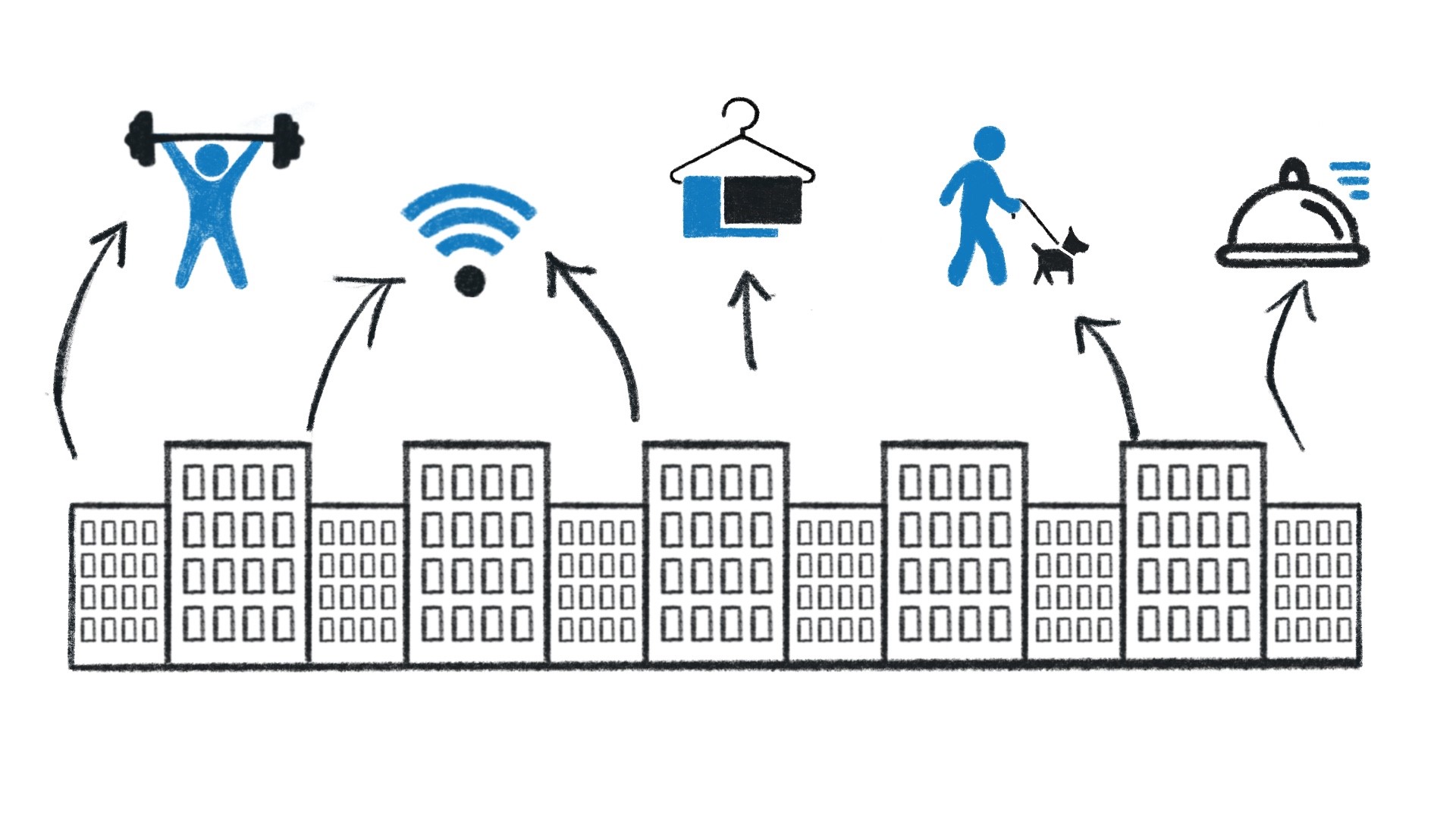A multifamily owner’s dream is to capture more of the dollars that are spent within their buildings, and attract more spend that doesn’t currently happen in their buildings. Residents spend money on many items that intersect with their living space: rent, Wi-Fi, cable, utilities, furniture, smart devices, home cleaning, security monitoring, interior design…the list goes on. Plus, they spend money in less direct ways: dog walking, home fitness, package delivery, renter insurance, and amenities like pools and bars during warm months, for example. These all represent potential increased revenue flows for building owners, if they could control or capture them. The increased use of these products and services also bring logistical issues: as the number of people and things that come through the doors increases, the need to access units and common areas increases, thus, increasing the security and privacy risks alongside more wear and tear on common areas and equipment. Getting a handle on these people and services in a profitable way could be very impactful…but is it possible?

To become a reality, owners have a few options: own the product or service that their residents are consuming, charge a “service fee” to the vendors to provide access to residents and/or their services, or share in the revenue upside (rev share). The first option is unlikely for a lot of reasons, so I’ll rule that out.
The challenge with service fees, or really any fees, is that they feel like a tax on vendors (or residents, depending on how it gets passed through). Taxes generally don’t feel great. Enforcement is also an issue. If residents are booking dog walks and cleaning through a non-owner approved service, can they really stop that? However, the arrow in the quiver of a multifamily owner is something that all vendors want: customer density. For example, if a building owner reached an agreement with a single dog walker, the number of customers in that building may enable a win-win-win for residents, owners, and vendors. Residents could receive lower prices from vendors, owners could receive their partnership fee, and vendors could efficiently service the building.
One model that owners generally don’t agree with is reselling products and/or services. In this situation, a building owner would buy products or services for a reduced cost and resell them to residents at a markup. For the most part, this offloads risk to the building owner and requires training and energy of staff to execute. Most of the time, the juice isn’t worth the squeeze for owners.
Several companies we’ve seen are trying to capture a category of spend (a la Wag or Handy), and some are achieving success in doing so. However, for a building owner to capture spend I believe they need to own a platform that their residents access those products and services through. Executing that vision is hard, because it essentially means limiting services to a single provider or two in each category, and boxing the rest out. More importantly, the service and experience would likely need to be just as good as, if not better, than current alternatives.
How would residents feel if they had limited options for certain services, especially if these services were subpar? Can owners stop another dog walker from accessing a building? Would those service providers play along? Are owners sophisticated enough to build their own, or be willing to give away upside to the company that does? There are a lot of unanswered questions. I’ve also yet to see a comprehensive platform that building owners can use to capture residents in the UI. Time will tell, and I expect we’ll see more sophisticated alternatives enter the market soon.
